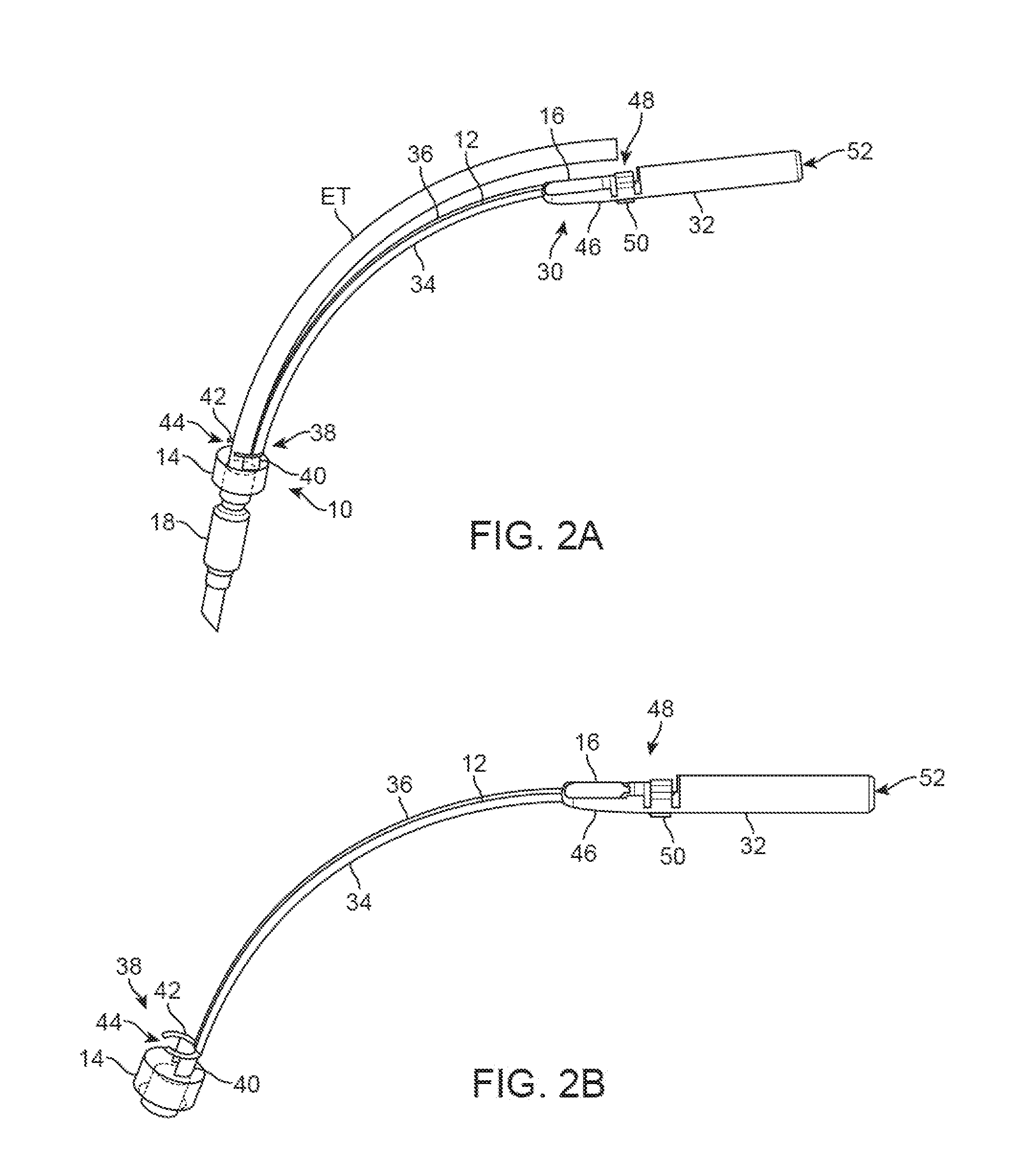Devices and methods for preventing tracheal aspiration
a technology of tracheal aspiration and devices, which is applied in the field of devices and methods for preventing tracheal aspiration, can solve the problems of increasing morbidity, difficulty in removing from the patient's airway, and prohibitively expensive medical facilities
- Summary
- Abstract
- Description
- Claims
- Application Information
AI Technical Summary
Benefits of technology
Problems solved by technology
Method used
Image
Examples
Embodiment Construction
[0067]In preventing conditions such as YAP from occurring in an intubated patient, various deployable mechanisms described herein may be used with any number of conventional ET tubes or with specially configured ET tubes as well. With the ET tube positioned within the patient's trachea, a barrier may be formed within or along the patient's airway which may prevent liquid, solid, or particulate matter from passing through the vocal cords and into the trachea to inhibit or prevent microaspiration, aspiration, and aspiration pneumonia. Hence, a deployable member may be positioned along an ET tube to reside, for instance, at the opening of the larynx, vestibule, vocal cords, or elsewhere along the airway. The deployable member, which in some variations may be inflatable or expandable, may be inserted either simultaneously with the ET tube during intubation or post-intubation once the ET tube has already been placed within the patient. Additionally or alternatively, a deployable member m...
PUM
 Login to View More
Login to View More Abstract
Description
Claims
Application Information
 Login to View More
Login to View More - R&D
- Intellectual Property
- Life Sciences
- Materials
- Tech Scout
- Unparalleled Data Quality
- Higher Quality Content
- 60% Fewer Hallucinations
Browse by: Latest US Patents, China's latest patents, Technical Efficacy Thesaurus, Application Domain, Technology Topic, Popular Technical Reports.
© 2025 PatSnap. All rights reserved.Legal|Privacy policy|Modern Slavery Act Transparency Statement|Sitemap|About US| Contact US: help@patsnap.com



